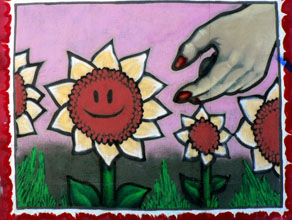|
|
||||
|
Where are all the Teens? Ash Rupp
On our second exposure to South Phoenix, my research team and I had a better idea of what we were looking for. We really wanted to find out what people, more specifically teenagers did. Not just for a living, but for fun. Where I’m from, North Scottsdale, I see kids hanging out at malls, Starbucks, and pretty much any where in town that they can get a ride to. I noticed in South Phoenix that I hadn’t seen any teenagers “hanging out.” I saw them get off the school buses and then they seemed to disappear. We didn’t see any groups of kids hanging out anywhere. We started to get curious about where the kids all went after school was out, they had to go somewhere. We decided to find out. We went to a high school in South Phoenix and asked to speak to the principal. We wanted to interview a small number of teenagers to find out where they went after school, if they felt safe in their neighborhoods, and if they had noticed all of the changes occurring in South Phoenix. We talked to a number of administrators before we finally met up with the Vice Principal of the school. We told her we were interested in interviewing a number of her students about their lives in South Phoenix. She seemed confused by some of our sample questions. I told her we wanted to know if the kids had noticed any change in their environments since the advent of all the new construction and ‘revamping’ of South Phoenix. While she didn’t say it, as the policeman had on our first visit to South Phoenix, she looked as if she didn’t think there was much going on. This surprised me. In all of the reading Dr. K has given us, the major theme has been the changes in South Phoenix. Even as far back as October of 1999, the Arizona Republic’s headline read, “South Phoenix Undergoing Rebirth.” Every new paper clipping Dr. K has given us has had similar themes. An article written by Sara Grineski really takes the reader through the history of the changes occurring in South Phoenix. When she is explaining what happened after WWII and this is still occurring today, she writes, “While the poor of South Phoenix were materially excluded from the postwar housing boom, their neighborhoods were increasingly encroached upon by new industries moving to Phoenix after the war” (Grineski 164). While much of the new construction in South Phoenix is no longer industry, the residents are still being pushed out of their communities. New homes are replacing old homes at prices that the residents cannot afford. I could not understand how people living here, or at least working here, could not see the changes. I realized then how important it is that we interview people who not only spend time in South Phoenix, but live there and perhaps had grown up there. Perhaps then we will find out the real story of the changes.
|
||||
|
|
||||

